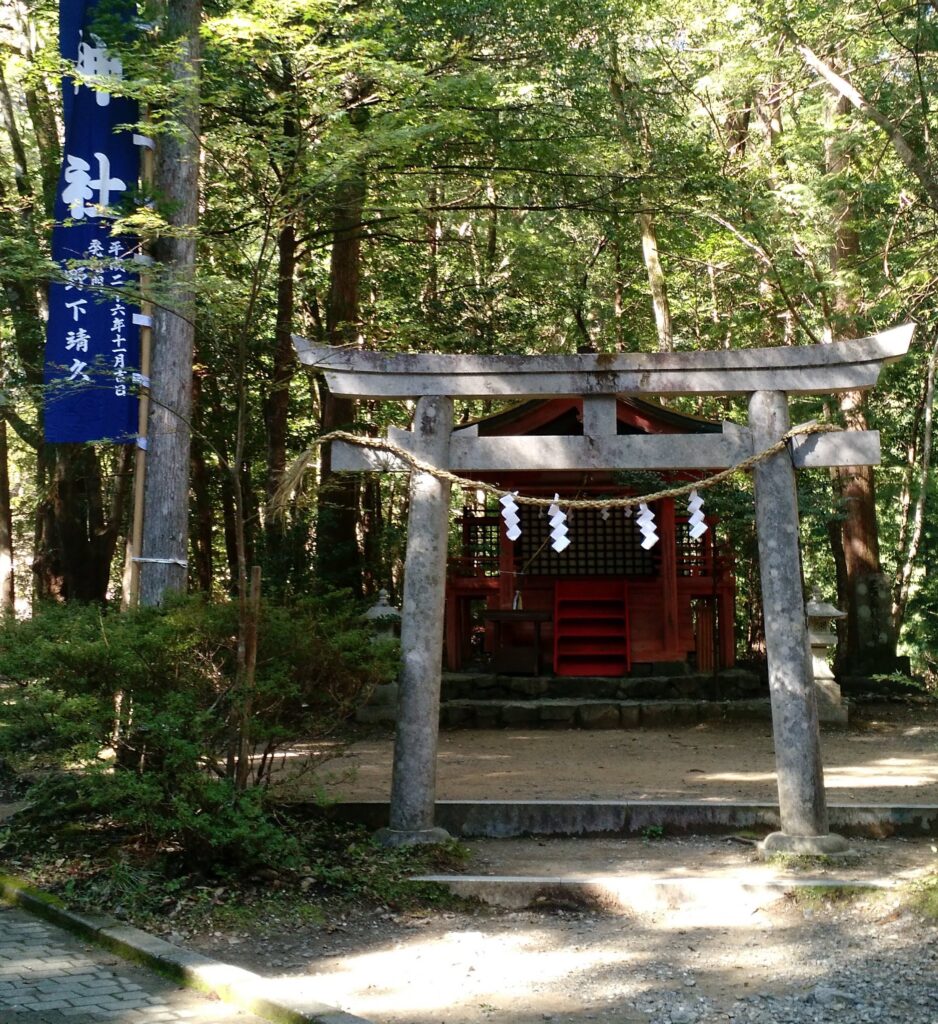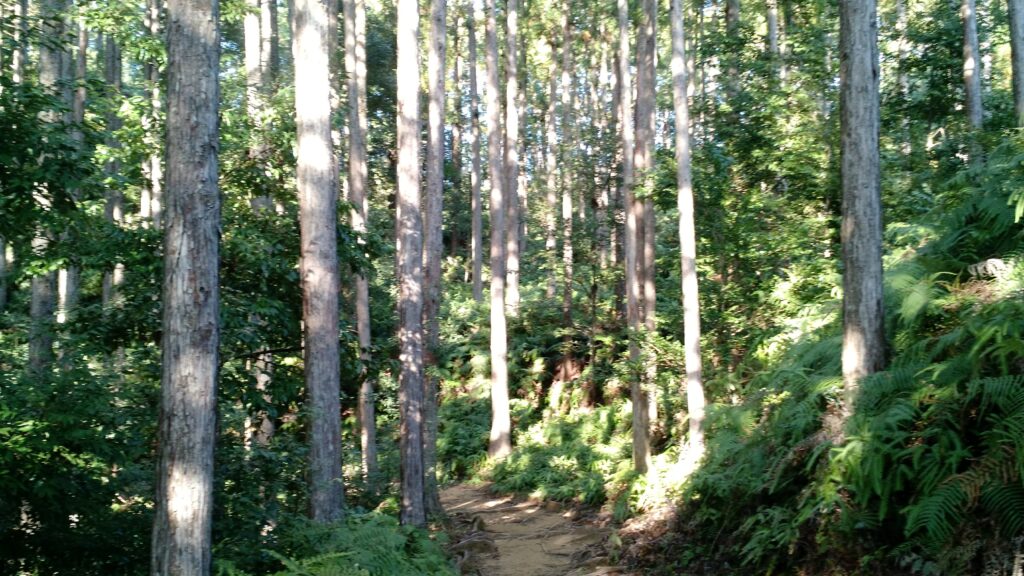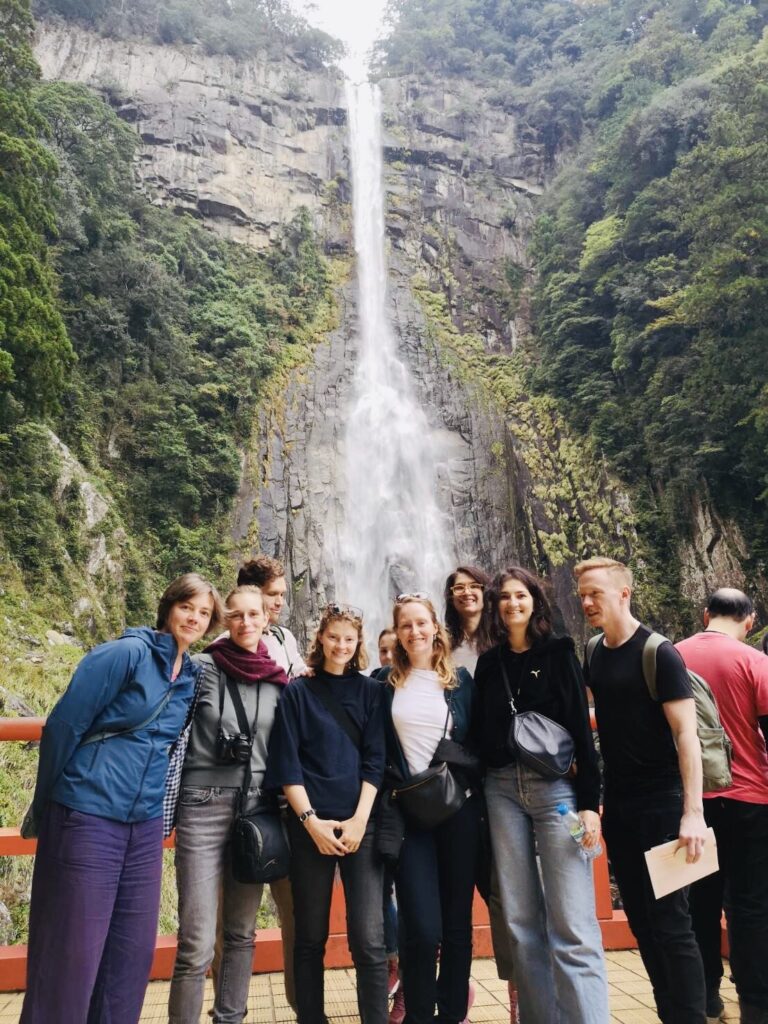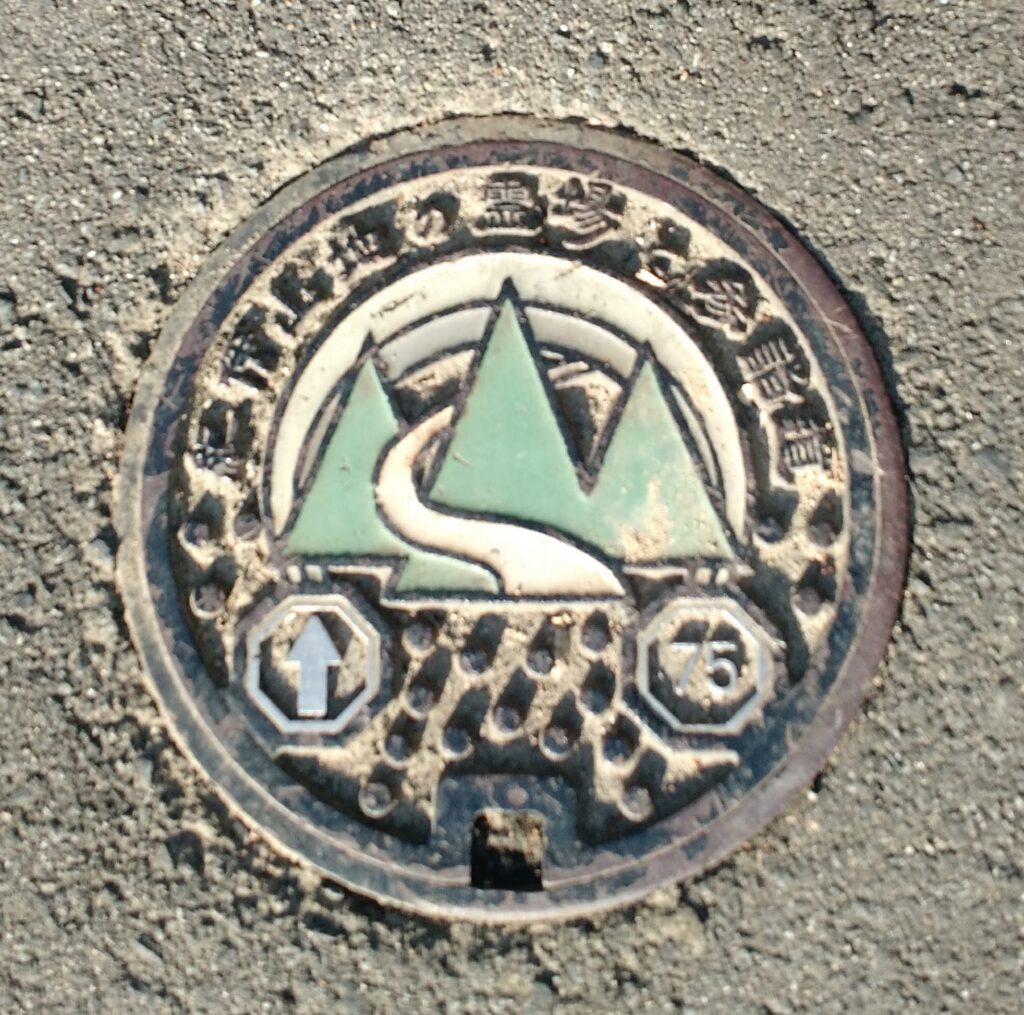
Hosshinmon Gate marks the outermost entrance of the Kumano Kodō, a pilgrimage route stringing together ninety-nine Shinto shrines. But Kumano becomes also the site of Amida’s Buddhist Pure Land, a projection of uneasy political cartography given that Kumano lay to the east of the medieval capitals, Nara and Kyoto. Pilgrims offered sutras at the Shinto shrines, mapping the heavenly onto the earthly and altering both in the process.
Our own way from Hosshinmon Gate took us seven kilometers—through gold and green on well-worn steps—to Kumano Hongū Taisha. Medieval pilgrims heard voices and wrote poetry; no surprise, then, that along the way we traded coffee for conversation. Icon, Naturalism, Calligraphy. What does script make visible?

The following day ended at Nachi where Shinto and Buddhist temples still stand together. On display at the Treasure House are rows of seated wooden figures. They used to be Goshintai or bodies that housed Shinto deities. These hosts were only revealed, however, after their deities had left them. No one knows what the current Goshintai look like. Close by, the Buddhist temple houses two icons of the same Buddha. One of them was hidden away. The other, a maedachi stand-in, is placed in front of this secret image. The docent at the Treasure House told us that while the hidden Buddha was stiff and stern, the Maedachi was emotive by contrast.

Questions about form, material, and style are enshrined in the practice of art history, but how do we describe that which we cannot see? How do we wrestle with the ephemeral and catch the divine in the waterfall?


